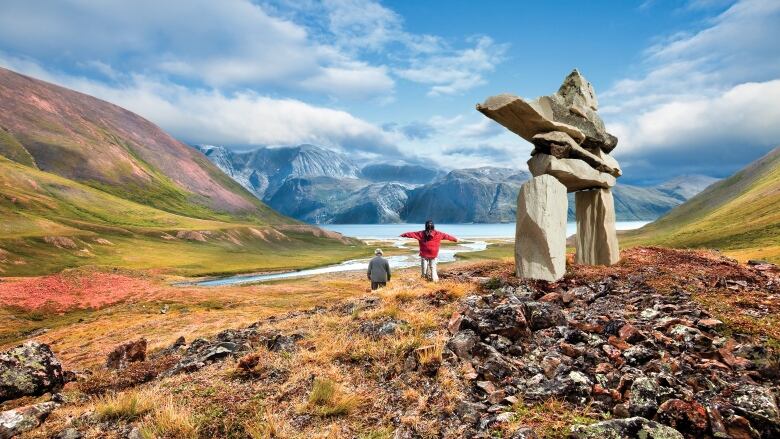4 ways to dodge crowds during a busy year for Canada's national parks
This isn’t the year to toss a tent into your trunk and wing it

When you think of Canada's national parks, what comes to mind first? Top spots like Banff and the Bay of Fundy? Beautiful summer long weekends? Instagram-worthy vistas and pretty hiking trails?
Well, whatever you're thinking, you can bet you're not the only one — especially during a year when Parks Canada is dishing out free passes for Canada's 150th anniversary and word of our year-long celebration is travelling beyond our borders.
So, how can you both enjoy the complimentary admission and avoid swinging selfie sticks in 2017?
Follow these steps to the paths less travelled.
1) Plan your trip early. (Like, yesterday.)
Parks Canada isn't only offering free entry to its nearly 50 national parks. Visitors can also visit over 170 national historic sites and four national marine conservation areas with their 2017 parks pass.
So start by exploring one of their region-specific guides — which you can browse online, download and print, or order by mail for free — to help you narrow down your options.
And if you want to camp, don't wait for the warm weather to prompt you, even if you plan to set up camp in the summer. The campsite reservation system is already accepting bookings until March. And, in late January, you'll be able to make reservations past April.
Remember: the early bird gets the oTENTik!

2) Consider nearby alternatives to popular parks.
Instead of joining a line of idling cars near Lake Louise, why not explore the origins of life on Earth at Yoho National Park?
Take a guided tour of the Burgess Shale, one of the most important animal fossil sites in the world, or explore the park's stunning waterfalls and vertical rock walls. This B.C. treasure isn't far from its more famous Albertan siblings in Banff and Jasper.

Parks Canada has singled out nine other hidden gems, with the outline of a pretty great itinerary for each: from booking a fully-equipped tent in Quebec's Mingan Archipelago to learning ranching fundamentals at Alberta's Bar U Ranch National Historical Site.
You may also want to browse books, blogs and the brains of experienced campers — or even, gasp, the second page of Google search results — for more under-the-radar suggestions. (That's where we found this handy list of every park you can visit for free this year, paired with a one-line description.)
3) Visit during an off-time.
Have your heart set on hiking around the Bruce Peninsula? Will you be joyless without Jasper?
These beautiful places are popular for a reason, so increase your odds of scoring alone time by visiting during the "shoulder seasons" of spring and fall, considering a winter camping trip or making your plans in the middle of the week. Perhaps you can turn a Tuesday to Thursday into your own personal long weekend, or risk a little rain, mud and snow to experience this busy year's quieter moments.

Plus, if you follow the first tip above and book yourself an overnight spot, you can also dodge the daytime visitors in the earliest and latest hours of the day.
And when you find yourself watching a sunrise on Signal Hill, N.L., or drinking in the Dark Sky Preserve at Fundy, N.B., you'll probably forget about everything but you and that stellar moment.
(But please, if you do end up without human supervision, enjoy responsibly. Check out this cautionary tale.)
4) Pick a destination that's truly wild and free.

Now, if you're really serious about getting away from the crowds — and possibly all humans — there are some options for only the most determined hearts (with sufficiently determined wallets to match).
Very few can say they're explored Ivvavik National Park, for instance, which averages about 100 visitors per year.
To get to this Yukon treasure, you'll need a seat on a Twin Otter bush plane, a mandatory safety session and the guidance of an Inuvialuit cultural host. But this is real mountain wilderness, so be prepared for unmarked trails, roaming bears and the steady company of the 24-hour sun.
Or you can find your own way to Sable Island, N.S., where you may see a sea of grey seals, majestic wild horses or the remains of a walruses, shipwrecks and sharks. (A general rule on this wild and remote island: don't touch it, don't bother it, don't even think about taking it home.)
You can also take a "tundra buggy" through Churchill, Man. or find out why Labrador's Torngat Mountains are also known as the place of spirits.
Now, if you still insist on visiting a popular park on a summer long weekend, try not to scowl at your fellow visitors, okay? You're just as likely to be the weird stranger accidentally photo bombing their family portrait.